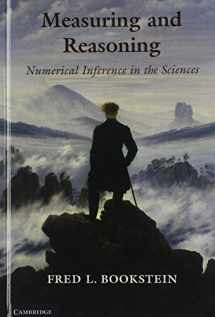
Measuring and Reasoning: Numerical Inference in the Sciences
Book details
Summary
Description
In Measuring and Reasoning, Fred L. Bookstein examines the way ordinary arithmetic and numerical patterns are translated into scientific understanding, showing how the process relies on two carefully managed forms of argument: * Abduction: the generation of new hypotheses to accord with findings that were surprising on previous hypotheses, and * Consilience: the confirmation of numerical pattern claims by analogous findings at other levels of measurement. These profound principles include an understanding of the role of arithmetic and, more importantly, of how numerical patterns found in one study can relate to numbers found in others. They are illustrated through numerous classic and contemporary examples arising in disciplines ranging from atomic physics through geosciences to social psychology. The author goes on to teach core techniques of pattern analysis, including regression and correlation, normal distributions, and inference, and shows how these accord with abduction and consilience, first in the simple setting of one dependent variable and then in studies of image data for complex or interdependent systems. More than 200 figures and diagrams illuminate the text. The book can be read with profit by any student of the empirical natural or social sciences and by anyone concerned with how scientists persuade those of us who are not scientists why we should credit the most important claims about scientific facts or theories.


We would LOVE it if you could help us and other readers by reviewing the book
Book review



